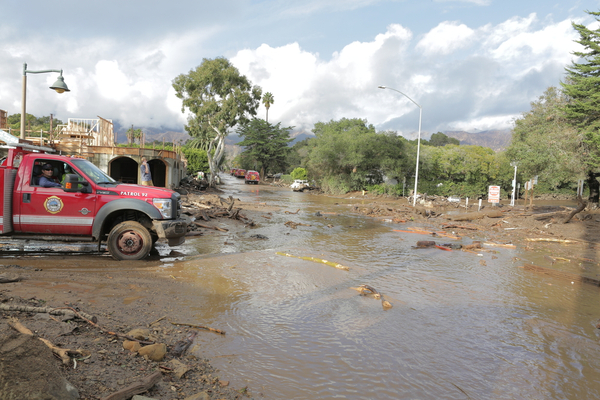Flash flooding is one of the most dangerous and deadly aspects of severe weather and is responsible for around 127 deaths per year, according to the National Weather Service.
As Accuweather reports, earlier this month, one storm chaser came across one such dangerous flash flood and jumped into action to help rescue those in need, an effort that he hopes will serve as an example of what people should do if they come across a flooded road.
AccuWeather Storm Chaser Aaron Rigsby was in western Texas on Thursday, June 1, when thunderstorms erupted over the small town of O’Donnell, located about 40 miles south of Lubbock. The thunderstorms were setting up in a dangerous pattern known as “training,” when storms repeatedly hit the same area over an extended period of time, triggering significant flooding.
Rigsby made his way toward O’Donnell on Highway 87, when just north of the town, he came across a stretch of road that was submerged in floodwaters with vehicles stranded at least halfway under water. So he got his feet wet and sprang into action. “I started making my way out toward a woman that had unfortunately stranded her vehicle,” Rigsby recalled during an interview on AccuWeather Early.
Texas has an abundance of red clay that doesn’t absorb water as well as soil in the eastern United States. The clay also made the floodwaters murky and impossible to see the road. “I was trying to go out in the water, see how deep it was, see if I could get to her,” he continued. “All of a sudden, a semi came beside me.”
As the truck plowed through the water, the motion lifted up the vehicles and they began to float away from him, so Rigsby knew he had to act fast to bring the motorists to safety. Once he reached them, Rigsby said he kept the stranded people calm as he helped them get out of their flooded vehicles and walked with them across the flooded road until they were safe on dry ground. “It was perfect timing for me being in the right situation at the right time.”
Weeks after the high-water rescue on that flooded Texas highway, Rigsby received an invitation from the CEO of Raising Cane’s to visit one of the fast-food restaurants in Denver. At first, he was confused by the invitation, but then found out that one of the people who he helped rescue was a manager at a Raising Cane’s restaurant who had told the company about Rigsby’s valiant efforts. Raising Cane’s hosted a small celebration for Rigsby to thank him, which included a free dinner, a gift card and some shirts.
But for Rigsby, it wasn’t about the tokens of appreciation. “It’s all about perspective,” he said. “For me, as a journalist and a storm chaser, it’s just instinct because it seems like the right thing to do.” Accuweather Chief On-Air Meteorologist Bernie Rayno applauded Rigsby’s actions. “Most people don’t realize storm chasers have a role,” he said, adding, “They’re following severe weather, but if someone needs help, they stop what they’re doing and help.”
When reflecting on the heart-pounding rescue, Rigsby said that he hopes that it can be an opportunity to teach people about what to do if they find themselves in a similar flooding situation. As little as a foot of moving water can sweep away a vehicle, so experts urge motorists to avoid driving across a road that is flooded.
The NOAA advises the following if you are driving and encounter a flooded road:
Do not walk or drive through flood waters. If you are trapped by moving water, move to the highest point and call 911. Vehicles can get swept away by as little as twelve inches of moving water– when in doubt, “Turn around, don’t drown!”
—
Photo Credit: Media Bakery13 / Shutterstock.com
